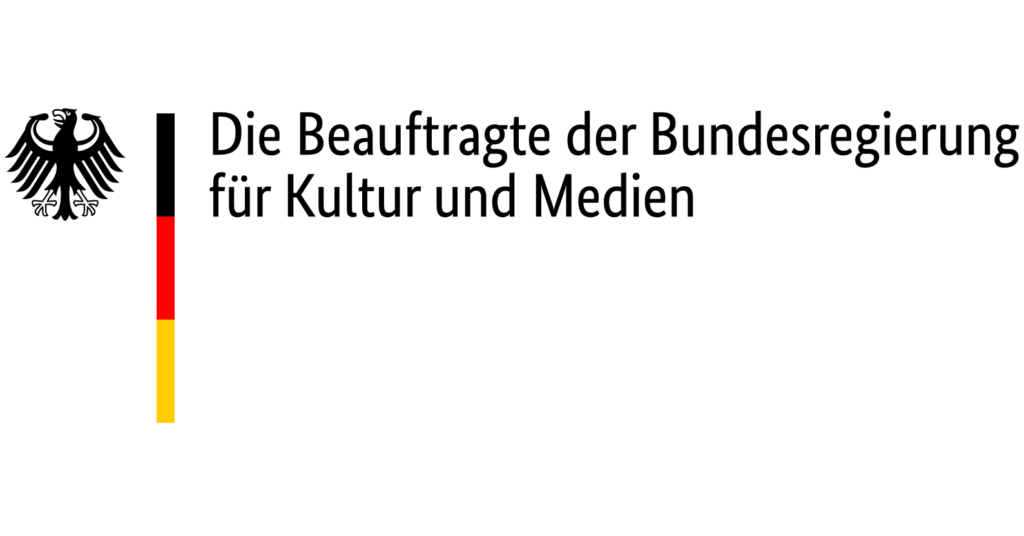Takiwatanga
The Autism Friendly
Dance Theatre
Guideline Project
What is Autism?
This page discusses the scientific views on autism. In this context, the commonly accepted terminology to describe the condition is Autism Spectrum Disorder (ASD). To be in alignment with the current academic approach, in this chapter, we use the term Autism Spectrum Disorder (ASD). For other chapters and pagesthat are discussing the performing arts aspects of the condition, we are going to use the term Autism Spectrum Condition that represents more the views of our autism representation team members and can potentially offer a more positive interpretation.


About the condition
“If you’ve met one person with autism, you’ve met one person with autism.” – Dr. Stephen Shore, autistic advocate
Autism Spectrum Disorder (ASD) is a neurodevelopmental disorder that affects social interaction, communication, and behavior. It is considered a spectrum disorder because the symptoms and their severity can vary greatly from person to person.
The current definition of Autism Spectrum Disorder is provided in the Diagnostic and Statistical Manual of Mental Disorders, 5th edition (DSM-5) published by the American Psychiatric Association. According to the DSM-5, a person must display persistent difficulties in social communication and interaction and restricted, repetitive patterns of behavior, interests, or activities to be diagnosed with ASD.
The following are some of the common CHARACTERISTICS associated with Autism Spectrum Condition:
1. Social interaction difficulties: Individuals with ASD may have difficulty initiating and maintaining social relationships, understanding social cues, and interpreting nonverbal communication.
2. Communication difficulties: Some individuals with ASD may have difficulty with spoken language and may be nonverbal, while others may have delayed language development or use language in a way that is atypical.
3. Restricted, repetitive patterns of behavior: Individuals with ASD may engage in repetitive behaviors, such as hand flapping or rocking, or have restricted interests in specific objects or activities.
4. Sensory aspects: Many individuals with ASD experience sensory sensitivities, such as over- or under-sensitivity to sensory input, such as sound, touch, or light. Some individuals may find certain textures, sounds, or smells overwhelming, while others may seek out sensory stimulation.
5. Linguistic understanding: Individuals with ASD may have difficulties understanding language, including figurative language, idioms, and sarcasm. They may also have difficulties with pragmatics, which refers to the social use of language, including taking turns in conversation and understanding nonverbal cues.
6. Metacommunication understanding: Metacommunication refers to the implicit messages conveyed through tone of voice, body language, and other nonverbal cues. Individuals with ASD may have difficulties understanding these implicit messages, which can lead to difficulties in social interaction.
It is important to note that the severity of these symptoms and characteristics can vary greatly from person to person, and that individuals with Autism Spectrum Disorder can lead fulfilling and productive lives with the right support and resources.
The exact cause of Autism Spectrum Disorder (ASD) is not yet fully understood, but research suggests that it is likely a combination of genetic and environmental factors that affects brain development and functioning. Several studies have identified differences in the structure and function of specific brain regions in individuals with ASD compared to typically developing individuals.
Neurological changes in autism
One of the brain regions that has been extensively studied in relation to autism is the amygdala, which is involved in processing emotions and social information. In individuals with ASD, the amygdala has been found to be larger and to have altered connectivity with other brain regions.
Another brain region that has been linked to autism is the corpus callosum, which is the structure that connects the two hemispheres of the brain. Alterations of the CC may lead to difficulties in communication and integration of information between the two sides of the brain.
The cerebellum, which is involved in motor coordination and learning, has also been found to be different in individuals with autism. Additionally, research has suggested that there may be differences in the way the brain processes sensory information in individuals with autism. Some individuals with autism may be overly sensitive to certain sensory input, while others may be under-sensitive.
It is important to note that while these differences in brain structure and function have been identified in individuals with autism, they do not provide a complete picture of the disorder and do not necessarily apply to all individuals with autism. Further research is needed to fully understand the neural basis of autism.
Literature: Neurological changes in autism
Havdahl, K. A., & Bassett, D. S. (2020). Brain network dynamics in autism: a review of recent findings. Neural Plasticity, 2020, 1-17. https://doi.org/10.1155/2020/2595183
Zikopoulos, B., Barbas, H. (2017). Prefrontal cortex projections and interconnections in primates: a comparative review. Frontiers in Neuroanatomy, 11, 27. https://doi.org/10.3389/fnana.2017.00027
McAlonan, G. M., Cheung, V., Cheung, C., Suckling, J., Lam, G., Tai, K. S., … Murphy, D. G. (2008). Mapping the brain in autism. A review of MRI studies. Journal of Neurodevelopmental Disorders, 1(1), 11-25. https://doi.org/10.1007/s11689-008-9011-1
Lai, M. C., Lombardo, M. V., Pasco, G., Ruigrok, A. N. V., Wheelwright, S. J., Sadek, S. A., … Baron-Cohen, S. (2014). A behavioral comparison of male and female adults with high functioning autism spectrum conditions. PLoS One, 9(7), e100205. https://doi.org/10.1371/journal.pone.0100205
Di Martino, A., Yan, C. G., Li, Q., Denio, E., Castellanos, F. X., Alaerts, K., … Milham, M. P. (2014). The autism brain imaging data exchange: towards a large-scale evaluation of the intrinsic brain architecture in autism. Molecular Psychiatry, 19(6), 659-667. https://doi.org/10.1038/mp.2013.78

Literature: About Autism
Baumeister, J., et al. (2021). Neural Correlates of Social Attention in Autism Spectrum Disorder. Journal of the American Academy of Child & Adolescent Psychiatry, 60(7), 575-583.
D’Cruz, A. M., et al. (2021). The Neurodevelopmental and Neural Connectivity Abnormalities in Autism Spectrum Disorder. Frontiers in Psychiatry, 11, 638136.
Ecker, C., et al. (2020). Subgrouping the Autism Spectrum: Refining the Research Agenda Based on Phenotypes and Endophenotypes. Lancet Psychiatry, 7(10), 851-861.
Gotts, S. J., et al. (2013). Resting-state functional connectivity reflects structural connectivity in the default mode network. Cerebral Cortex, 23(8), 2013-2020.
Jones, W., et al. (2011). A review of the literature on sensory modulation interventions for individuals with autism spectrum disorders. Focus on Autism and Other Developmental Disabilities, 26(1), 43-54.
Kasari, C., et al. (2008). Joint attention and symbolic play in young children with autism: a randomized controlled intervention study. Journal of Child Psychology and Psychiatry, 49(2), 1206-1214.
Koyama, T., et al. (2021). The neural mechanisms underlying impaired social-emotional processing in autism spectrum disorder. Neuroscience & Biobehavioral Reviews, 126, 496-512.
Markram, H., et al. (2007). The intense world syndrome—an alternative hypothesis for autism. Frontiers in Neuroscience, 1, 77.
McPartland, J. C., et al. (2015). Meta-analysis of gaze following in autism spectrum disorders. Frontiers in Psychology, 6, 993.
Messinger, D. S., et al. (2011). Positive affect and emotion regulation in infants at risk for autism spectrum disorders. Child Development, 82(6), 1758-1775.
Mosconi, M. W., et al. (2009). Early diagnosis of autism spectrum disorders: the metabolism to cognition pathway. Journal of the American Academy of Child & Adolescent Psychiatry, 48(2), 107-114.
Murias, M., et al. (2007). Resting state cortical connectivity reflected in EEG coherence in individuals with autism. NeuroImage, 34(4), 1774-1781.
Nordahl, C. W., et al. (2011). Brain volumes in preschoolers with autism spectrum disorders: a longitudinal study. Biological Psychiatry, 69(7), 672-678.
Oldehinkel, M. J., et al. (2017). The relation between social cognition, executive function, and repetitive behaviors in autism spectrum disorder: a review. Neuroscience & Biobehavioral Reviews, 77, 139-154.
Pierce, K., et al. (2011). Face-processing abnormalities in autism: studies of typical development. Developmental Psychobiology, 53(1), 5-17.
Posar, A., Resca, F., & Visconti, P. (2015). Autism according to diagnostic and statistical manual of mental disorders 5th edition: The need for further improvements. Journal of pediatric neurosciences, 10(2), 146.
Ruggeri, B., et al. (2017). Theory of mind, executive function and central coherence in autism spectrum disorder: a meta-analysis. Neuroscience & Biobehavioral Reviews, 72, 298-309.
Santos L., et al. (2010). Understanding intentions in dynamic human actions: an fMRI study of goal inference and intention understanding in typical development and autism spectrum disorders. Neuropsychologia, 48(7), 1951-1961.
Schmitz, N., et al. (2021). Atypical Neural Processing of Social Stimuli in Autism Spectrum Disorder: A Systematic Review of fMRI Studies. Frontiers in Psychiatry, 11, 659076.
Shih, P., et al. (2011). Neural substrates of social cognition in autism: the role of the amygdala and fusiform gyrus. International Journal of Developmental Neuroscience, 29(2), 183-191.
Van de Cruys, S., et al. (2014). The role of the visual system in the development of face processing skills in autism. Frontiers in Human Neuroscience, 8, 848.






